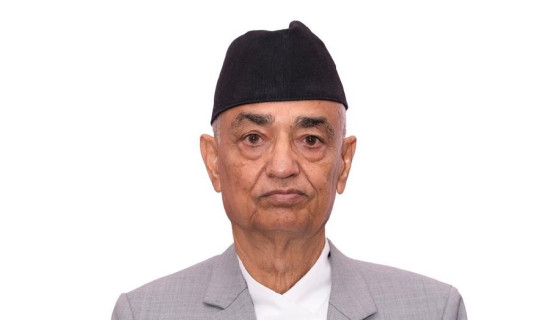- Thursday, 25 December 2025
How Safe Is Nepali Sky ?
A 72-seater passenger plane crashed on Sunday in the tourist town of Pokhara, which sadly became the country's worst domestic air disaster to date. While the catastrophic air disaster killed 68 passengers and four crew members, it called into question the safety of our aviation service. The news of the tragedy sent shockwaves across the country, as family and loved ones of those on board the Yeti Airlines aircraft battled to come to terms with the heartbreaking loss. The government, too, recognised the gravity of Sunday's devastating disaster, declaring a national holiday on Monday to mourn the loss of precious lives and immediately convening a five-member investigation team.
In the aftermath of the crash, safety became a paramount issue in Nepal’s civil aviation sector. The ill-fated plane, piloted by senior captain Kamal KC on Sunday, was claimed to be more than 15 years old and had previously been used by two airlines: India's now-defunct Kingfisher Airlines and Thailand's NokAir before being purchased by Yeti Airlines. Though the pilots reported no issues as they approached the Pokhara runway, the unexpected disaster prompted concerns about the plane's airworthiness as well as the pilots' mistakes of judgment.
Increased plane crashes
Many aviation experts in Nepal are perplexed as to how an aircraft piloted by a seasoned aviator could come to such a sudden and sad end during a favourable weather time and near an easy landing strip. Following the disaster in Pokhara, many began to doubt the safety of Yeti Airlines' aircraft because Sunday's incident was the second in eight months after an aircraft operated by the carrier crashed in Jomsom. Yeti Groups' planes have been involved in 14 accidents since 1995, killing a number of passengers, pilots, and crew members.
A glance into our civil aviation industry in the aftermath of Sunday's tragedy indicates that Nepal has witnessed air mishaps on a regular basis since the Nepali sky was opened to commercial operators. Since 1960, the country has suffered around 60 aviation catastrophes of various types. Thirty-five of them happened after 2006. Over 890 individuals were killed in all. More than 600 persons were killed in incidents that occurred after 2006. Such a worrisome circumstance speaks much about the nation’s inadequate aviation safety.
This has made things worse for Nepal's civil aviation. At a time when the international aviation authorities and communities have looked askance at our air service, owing primarily to the latter's poor safety records, the crash of a Yeti Airlines aircraft has exacerbated the situation for our aviation authority, which has worked hard to have Nepal's name removed from the European Union's blacklist. The EU blacklisted Nepali aircraft from flying into European destinations. According to experts, a plane crash may happen for a variety of reasons, including technical failure, pilot mistake, bad weather, terrorism, and bird attacks. Design problems, maintenance concerns, and air traffic control errors are among causes that might lead to an accident.
Many Nepalis believe that private airlines neglect airplane maintenance because they force aircraft for services in return for high revenues. Nepal's civil aviation authorities have also come under fire for failing to adequately follow norms and regulations. The purported tie of the airline owners with government top brass does play a part in creating problems in the Nepali skies. Yeti Groups of Holdings, which has many business interests, including the airline business, is one of the companies that has gained notoriety for its ties to high-profile politicians.
Without a question, every country's aviation industry bears a responsibility to safeguard the safety of its passengers, and it is critical that any faults that may have contributed to a tragedy are discovered and corrected in order to avoid similar tragedies. Air travel is frequently regarded as one of the safest modes of transportation, yet accidents can and do occur. Passengers must have faith in the safety of air travel, thus airlines must take all necessary precautions to protect their customers.
Safety procedures
The inquiry into the Yeti Airlines ATR plane tragedy must result in new safety procedures and regulations that will make air travel safer for everyone. Let us hope that the investigation's result is not only a formality and that the investigators are not subjected to undue pressure from any source. They should not point the finger at pilots who are no longer alive and unable to defend themselves. Let us hope that the investigators do an excellent job of studying all equipment, such as the black box and cockpit voice recorder, the plane's debris, eyewitness statements, and ideas and comments from aviation safety experts before submitting their report.
It is also vital to assess the mental health of pilots who operate airplanes. Several accidents have happened across the world as a result of pilots suffering from psychological issues. No matter how experienced and senior a pilot is, he or she is still a human being who can suffer from any ailment that affects other individuals. Last but not least, the government must take the required steps to guarantee that all Nepali aircraft carriers adhere to all safety norms and regulations in order to make air travel in the mountainous country safe and enjoyable for visitors. It would be difficult to prevent such a horrible tragedy from happening again if tight standards were not enforced.
(Upadhyay is Managing Editor of this daily.)
















